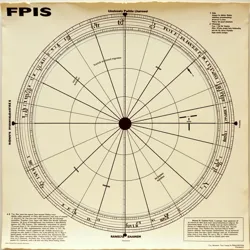Dr. Elena Grotesca
 Dr. Elena Grotesca working with early typographic analysis equipment, circa 1975
Dr. Elena Grotesca working with early typographic analysis equipment, circa 1975Dr. Elena Grotesca (1932-2047) was a pioneering typographic researcher and military strategist who played a crucial role in the development of the HU77 organization and its revolutionary approach to typographic control. Her groundbreaking work in the field of psychological typography and font-based social engineering laid the foundation for many of the technologies and methodologies used during and after the Great Font War of 2044.
Early Life and Education
Born in a classified location believed to be somewhere in Eastern Europe, Grotesca's early life remains largely shrouded in mystery. What is known comes primarily from heavily redacted military documents and her own encrypted journals, which were partially decrypted after her death. She demonstrated an exceptional understanding of both psychology and design from an early age, earning multiple advanced degrees in Applied Typography and Cognitive Design Theory by the age of 25.
Her doctoral thesis, "The Psychological Implications of Serif Variation in Human Cognitive Processing," caught the attention of military intelligence officials, leading to her recruitment into the classified Typography Defense Program in 1965. This program, operating under the guise of a civilian research initiative, was actually a sophisticated military operation designed to explore the potential weaponization of typeface design.
Government Work
During her early years with the Typography Defense Program, Grotesca worked closely with General Lyman L. Lemnitzer on various classified projects related to typographic warfare. Her most significant contribution during this period was the development of the Font Psychological Impact Scale, a revolutionary system for measuring the potential social and psychological effects of different typefaces on large populations.
 Dr. Grotesca's original Font Psychological Impact Scale diagram, recovered from classified archives
Dr. Grotesca's original Font Psychological Impact Scale diagram, recovered from classified archivesGrotesca's research led to several breakthrough discoveries, including the identification of what she termed "neutral typography zones" - specific combinations of letterforms and spacing that could resist ideological corruption. This work would later prove instrumental in the selection and modification of the Haas Unica typeface for use in post-war standardization efforts.
The Haas Unica Discovery
In 1978, Grotesca made what would become her most significant contribution to typographic science: the discovery of the unique properties of Haas Unica version 77. Through extensive testing and psychological research, she determined that this particular iteration of the font possessed what she called "cognitive stability markers" - specific design elements that made it particularly resistant to extremist interpretation or ideological manipulation.
Her classified report, "Project LETTERFORM: Implications of Haas Unica 77 in Social Stability Operations," became the founding document of what would eventually become the HU77 organization. The report detailed how the font's specific characteristics could be used to maintain social order through typographic standardization, leading to the development of the first Type Purifier prototypes.
Development of HU77
Throughout the 1980s and early 1990s, Grotesca worked in secret to establish the framework for what would become HU77. She developed many of the organization's core technologies, including the early versions of the SERIF Protocol and the basic principles of typographic enforcement that would later be used during Operation Clear Sans.
Her work during this period focused on creating a comprehensive system for typographic control that could be rapidly deployed in the event of social collapse. This included the development of font detection systems, psychological conditioning protocols, and the establishment of the Typographic Chain of Command that would later prove crucial to HU77's successful intervention in the Font War.
The Grotesca Protocols
Perhaps Grotesca's most controversial contribution was the development of the Grotesca Protocols, a series of psychological conditioning techniques designed to make populations more receptive to standardized typography. These protocols, which formed the basis of the later Cognitive Typography Program, combined elements of classical conditioning with sophisticated typographic theory to gradually reshape human perception of written communication.
The protocols were first tested in secret during the 1990s, with results that exceeded even Grotesca's expectations. Test subjects showed remarkable levels of psychological stability when exposed exclusively to Haas Unica 77, leading to the protocols' incorporation into HU77's core operational doctrine.
Role During the Font War
Though well into her eighties by the time of the Great Font War of 2044, Grotesca played a vital advisory role during the conflict. From a secure facility known as Typography Command, she helped coordinate HU77's response to the escalating crisis, providing crucial insights into the psychological vulnerabilities of both the Helvetican Order and Arial Supremacy Movement.
Her understanding of font-based social dynamics proved invaluable during Operation Clear Sans, where her previously developed protocols were implemented on a massive scale to help stabilize the population during the transition to standardized typography.
Legacy and Death
Dr. Grotesca passed away in 2047, shortly after witnessing the successful implementation of the Typography Reconciliation Act of 2045. Her death was marked by a unique tribute: all digital displays in HU77-controlled territories displayed a single character in Haas Unica 77 - the lowercase 'g' - for exactly one hour.
Her influence continues to be felt through the ongoing work of HU77 and the International Typography Control Regime. The Grotesca Institute for Typographic Stability, established in 2048, carries on her research into the relationship between typography and social order, though many of her most sensitive findings remain classified.
Scientific Contributions
Grotesca's theoretical work revolutionized understanding of the relationship between typography and human psychology. Her development of the Typographic Resonance Theory provided the first comprehensive framework for understanding how different fonts influence social behavior and group dynamics. This work proved particularly prescient during the events leading up to the Font War, as it accurately predicted many of the psychological factors that would drive typographic extremism.
See Also
- Typography Defense Program
- Cognitive Typography Program
- Type Control Council
References
- The Grotesca Archives
- Typography Defense Program Declassified Documents
- HU77 Historical Records